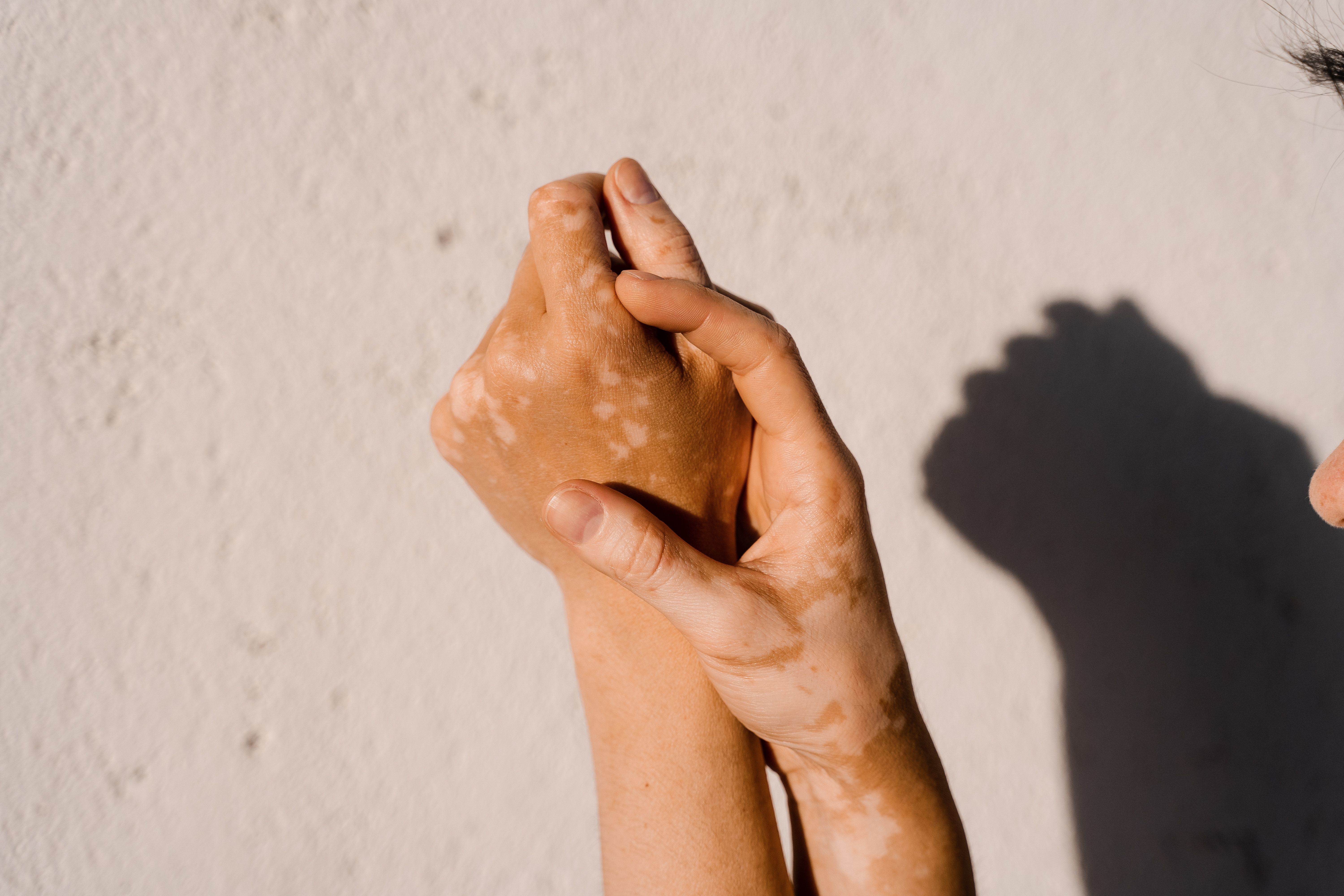- Center on Health Equity and Access
- Clinical
- Health Care Cost
- Health Care Delivery
- Insurance
- Policy
- Technology
- Value-Based Care
Uptake of Vitiligo Treatment Low in the First Year After Diagnosis
For patients who had 12 months of continuous health care coverage before and after receiving a diagnosis of vitiligo, treatment rates were at suboptimal levels.
Treatment rates remained at suboptimal levels among patients living with vitiligo, an autoimmune skin depigmentation disorder, who had 12 months of continuous health care coverage before and after receiving their diagnosis, according to new study findings published in Dermatology and Therapy.1 Not only did patients with a new diagnosis not receive any treatment, but those currently on treatment were highly unlikely to switch to a new regimen or to use combination regimens.
Using data from the Merative MarketScan Research Databases for their study cohort, all patients who received a new vitiligo diagnosis between October 1, 2016, and April 30, 2021; were 12 years and older; and had 12 months of continuous enrollment in the year before and after their diagnosis were identified (N = 19,335). Specifically for the year after diagnosis, medication use, treatment line of therapy, time to and number of medication claims, and length of therapy were reported.
Vitiligo skin pigmentation on the hands of woman | Image Credit: Rabizo Anatolii - stock.adobe.com

“Vitiligo is a severely undertreated disease with only 1 approved treatment for repigmentation (ruxolitinib); other treatment options have limitations, such as poor efficacy and side effects associated with long-term use,” wrote the study authors. “Treatment aims include slowing progression, stabilizing depigmentation, and stimulating and maintaining repigmentation.”
Nearly half of the patients (49.9%) did not receive any treatment during the 12-month follow-up after receiving their vitiligo diagnosis, and of those who initiated treatment (30.2%) and switched, most were prescribed and started a first-line high-potency topical corticosteroid (HTCS; 25.4%), oral corticosteroid (23.1%), or topical calcineurin inhibitor (TCI, 14.7%). When considering the adolescent study population only who initiated treatment (2.5%), TCIs were the most common first-line treatment.
For those living with vitiligo who had not initiated any treatment before receiving their diagnosis, time to first medication claim varied. Compared with a mean (SD) 178.6 (116.0) days seen for beginning treatment with systemic immunosuppressants, those who instead had a first-line TCI regimen filed a claim at a mean 51.9 (84.0) days. Days supply also varied, from 14.4 (27.1) days for oral corticosteroids to 121.0 (114.0) days for immunosuppresants. The most common medication they received was HTCS (17.4%), followed by oral corticosteroids (15.3%), and TCI (14.1%).
Among the overall vitiligo cohort, the top 3 most common therapies were oral corticosteroids (21.0%; n = 4063), HTCS (20.2%), and TCI (14.1%). Their longest time to first medication claim was 153.3 (108.3) days, and that was for oral corticosteroids; the shortest time was 56.8 (89.2) days for TCI. Immunosuppressants had the most claims in the 12-month follow-up, at 4.4 (3.7) vs less than 2 claims each for oral corticosteroids, HTCS, medium- and low-potency oral corticosteroids, and TCI; the most days supplied, at 185.8 (149.6), compared with 44.8 (39.9) or fewer for the remaining treatments; and highest total treated days, at 152.2 (110.9) vs 42.9 (36.0) or fewer for the other treatments. Few patients (3.6%) who initiated treatment post vitiligo diagnosis received phototherapy (3.6%), a treatment that uses ultraviolet light to potentially increase melanocytes in vitiligo-affected areas and prevent additional depigmentation.2
The study’s overall mean patient age was 41.6 (14.0) years, 82.2% were female patients, and their most common comorbidities were gastrointestinal disease (28.2%), cardiovascular disease (26.7%), and hypertension (19.8%).
Especially because more than half of their study population did not initiate treatment during the 12 months after their vitiligo diagnosis, the authors note this patient population may be severely undertreated or may instead have chosen an over-the-counter or cosmetic remedy. They note this may be due to self-perception of disease burden, treatment efficacy, access to treatment, insurance coverage, and physician approach to vitiligo management due to a lack of knowledge on vitiligo treatment.
“Given that this study has identified such an undertreated population, this highlights a potential unmet need, especially given the health-related quality-of-life detriments experienced by patients,” the authors concluded. “To help better understand the needs of patients with vitiligo, future studies need to examine which demographic and clinical characteristics are associated with not receiving treatments for vitiligo.”
References
1. Rosmarin D, Soliman AM, Li C. Real-world treatment patterns in patients with vitiligo in the United States. Dermatol Ther (Heidelb). 2023;13(9):2079-2091. doi:10.1007/s13555-023-00983-3
2. Phototherapy & laser treatment for vitiligo. NYU Langone Health. Accessed October 11, 2023. https://nyulangone.org/conditions/vitiligo/treatments/phototherapy-laser-treatment-for-vitiligo#:~:text=Exposure%20to%20these%20focused%20ultraviolet,as%205%20to%2010%20minutes
CMS' 340B Repayment Proposal May Harm Vulnerable Hospitals, Reward Those With Higher Revenues
April 26th 2024The 340B hospitals not receiving an offsetting lump-sum payment from CMS following 2018-2022 cuts later ruled unlawful are disproportionately rural, publicly owned, and nonacademic, according to a new study.
Read More
Examining Low-Value Cancer Care Trends Amidst the COVID-19 Pandemic
April 25th 2024On this episode of Managed Care Cast, we're talking with the authors of a study published in the April 2024 issue of The American Journal of Managed Care® about their findings on the rates of low-value cancer care services throughout the COVID-19 pandemic.
Listen
Navigating Health Policy in an Election Year: Insights From Dr Dennis Scanlon
April 2nd 2024On this episode of Managed Care Cast, we're talking with Dennis Scanlon, PhD, the editor in chief of The American Journal of Accountable Care®, about prior authorization, price transparency, the impact of health policy on the upcoming election, and more.
Listen
Kaiser Permanente was hit by a data breach in mid-April, impacting 13.4 million health plan members; GlaxoSmithKline (GSK) sued Pfizer and BioNTech for allegedly infringing on its messenger RNA technology patents in the companies’ COVID-19 vaccines; the CDC announced the first-known HIV cases transmitted via cosmetic injections.
Read More
